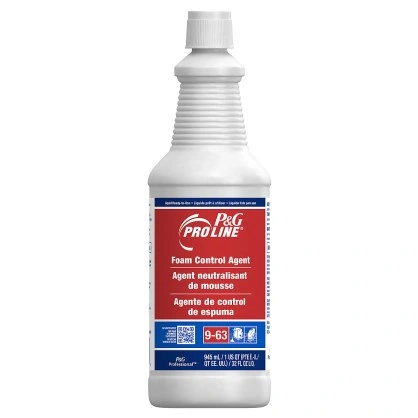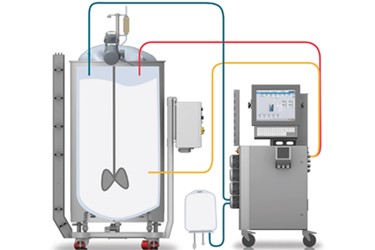The Role of Foam Control in Enhancing Product Quality and Performance
Foam control is an often-overlooked yet essential element in the quest of item top quality and functional performance across diverse industries. By effectively taking care of foam formation, firms can not just enhance the consistency of their formulas yet likewise take on functional challenges that can hamper performance. This conversation will certainly discover the multifaceted effect of foam on both product honesty and production processes, increasing necessary inquiries concerning the approaches that can be used to optimize foam control. As we take into consideration these ramifications, it becomes clear that the stakes are greater than they may at first show up.

Comprehending Foam Formation
Foam formation is an intricate phenomenon that can dramatically influence product top quality and operational effectiveness across various industries. It takes place when gas bubbles end up being entraped in a liquid, bring about the development of a foamy structure. Several factors add to this procedure, consisting of the chemical and physical properties of the liquid, the existence of surfactants, and the problems under which blending takes place. Comprehending these variables is critical for managing foam successfully.
The liquid's viscosity and surface stress play crucial roles in foam stability. Surfactants, for example, can decrease surface stress, promoting bubble development but additionally improving foam stability, which can be troublesome in specific applications. Furthermore, mechanical anxiety, temperature changes, and the existence of pollutants can worsen foam generation, making it important to monitor these facets during production procedures.
Industries such as food and drink, drugs, and chemical production must be specifically cautious concerning foam control. By comprehending the underlying devices of foam development, companies can apply targeted techniques to reduce its effects, consequently maintaining operational performance and making sure regular product performance.
Impact on Product Quality
The existence of foam can considerably endanger item high quality throughout different markets. In making processes such as food and drink, pharmaceuticals, and cosmetics, extreme foam can result in inconsistent product formulations. In food manufacturing, foam might trap air, impacting structure and taste, which can eventually change consumer assumption and complete satisfaction.
Additionally, foam can impede the harmony of paints and coverings, resulting in defects like bubbles and uneven finishes. In pharmaceutical applications, foam can interfere with the exact dosing of liquid medicines, possibly impacting therapeutic efficiency and patient security. These quality concerns not just reduce the end product's charm however can additionally bring about costly recalls and damages to brand name credibility.
Furthermore, the existence of foam can make complex quality assurance procedures, making it challenging to accomplish accurate dimensions and regular results. Reliable foam control not only minimizes these dangers however likewise improves total product quality by guaranteeing that solutions meet rigid market requirements. By purchasing foam control strategies, firms can guard their products, improve customer contentment, and maintain an one-upmanship in the marketplace.
Operational Obstacles From Foam
Reliable operations in various sectors can be significantly disrupted by the visibility of foam, which presents several difficulties throughout production procedures. Foam can impede blending and response times, restraining the performance of chemical procedures. In markets such as food and drink, link foam development can cause unreliable fill degrees, causing item waste and incongruities in product packaging.

In atmospheres where hygiene is vital, such as drugs and food handling, foam can complicate cleansing protocols, producing covert storage tanks for impurities. This not only raises top quality problems yet additionally can lead to conformity issues with regulative criteria.
Moreover, the mental effect on drivers can not be forgotten; excessive foam can develop a chaotic Related Site work atmosphere, leading to decreased spirits and productivity. In recap, addressing the operational obstacles positioned by foam is essential to keeping efficiency and product high quality in different sectors.
Methods for Efficient Foam Control
Just how can markets successfully mitigate the difficulties positioned by foam? Effective foam control techniques are important for boosting product high quality and operational performance. One main method is using defoamers, which are anonymous chemical agents made to get rid of or reduce foam development. Picking the appropriate defoamer requires a comprehensive understanding of the specific process conditions and the materials included.
Along with chemical solutions, process optimization plays an essential duty in foam administration. Industries can assess and change specifications such as mixing temperature, stress, and rate to reduce foam generation. Applying devices modifications, like mounting foam-breaking gadgets or adjusting storage tank design, can additionally help in reducing foam degrees.
Routine monitoring and evaluation of foam actions within production processes are also important. Using sophisticated sensing units and analytics can supply real-time data, enabling prompt treatments and modifications. Staff training is equally vital; making sure that employees are well-informed about foam dynamics and control strategies can cause proactive foam monitoring.
Study and Sector Applications
While numerous industries encounter unique obstacles associated with foam control, study expose that customized approaches can significantly improve both item quality and operational performance. In the pharmaceutical market, for example, a leading maker executed a customized foam control method that lowered foam formation during fermentation procedures. This advancement not only boosted return by 15% yet additionally decreased contamination risks, ensuring greater item stability.
In a similar way, in the food and beverage industry, a major dairy producer confronted excessive foam during pasteurization - Foam Control. By introducing a specialized antifoam representative, they reduced handling time by 20%, which directly converted to raised throughput and lowered power usage. The application of foam control determines ensured regular item appearance and preference, enhancing brand name commitment
In the chemical production sector, a study highlighted the effective application of foam control in wastewater therapy procedures. The implementation of a real-time surveillance system permitted drivers to readjust antifoam dosage dynamically, leading to a 30% reduction in chemical use and enhanced effluent top quality.
These situation researches illustrate the varied applications of foam control across industries, highlighting its vital duty in enhancing product quality and functional effectiveness.
Final Thought
In conclusion, efficient foam control is essential to enhancing item top quality and operational effectiveness throughout various sectors. Eventually, focusing on foam control adds to improved performance, protecting brand online reputation, and enhancing consumer complete satisfaction, highlighting its importance in quality guarantee within producing processes.
Foam control is an often-overlooked yet essential part in the search of product quality and functional efficiency across diverse sectors. Personnel training is just as essential; making certain that employees are knowledgeable regarding foam dynamics and control techniques can lead to aggressive foam monitoring.
While lots of markets face unique challenges related to foam control, case researches expose that customized methods can substantially boost both item quality and functional efficiency (Foam Control). In the pharmaceutical market, for circumstances, a leading maker executed a custom-made foam control approach that lowered foam development during fermentation procedures.In verdict, reliable foam control is important to enhancing product quality and operational effectiveness across numerous sectors